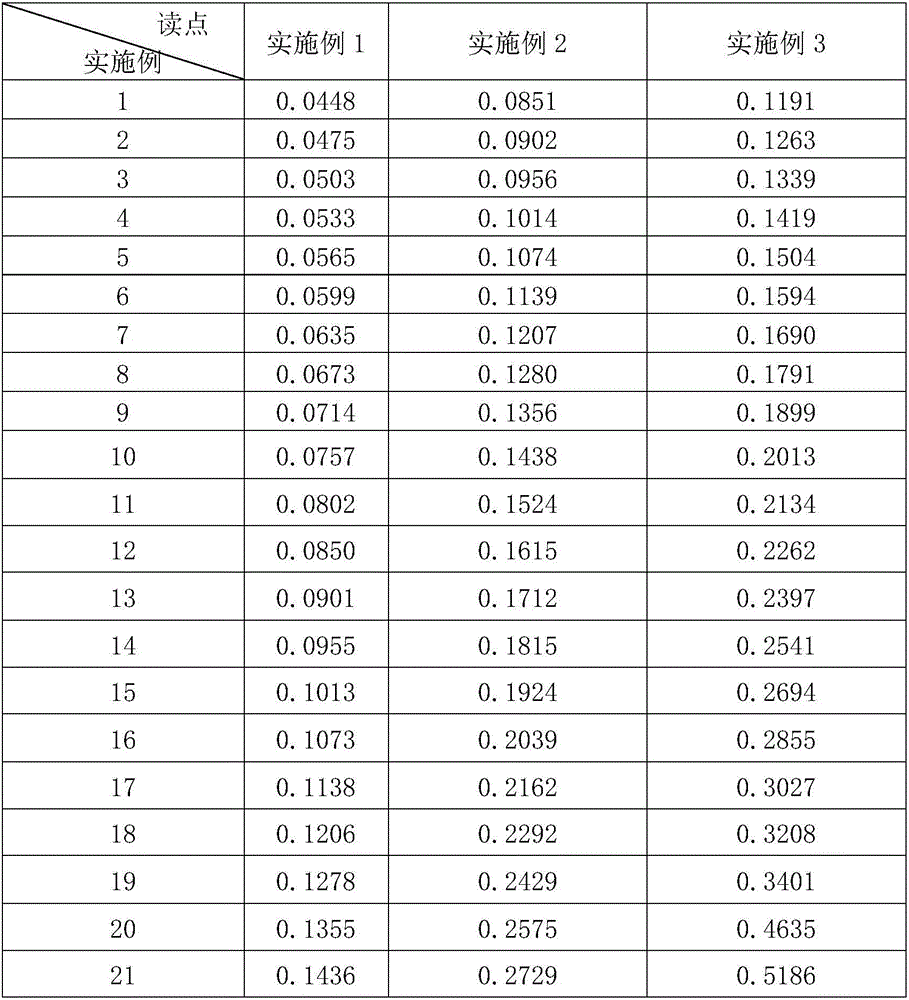Enzymatic cycling method for detecting homocysteine
A homocysteine and homocysteine technology, which is applied in the preparation of test samples, measurement devices, color/spectral characteristics measurement, etc., can solve the problems of difficult to master production technology, difficult market application, and high cost
- Summary
- Abstract
- Description
- Claims
- Application Information
AI Technical Summary
Problems solved by technology
Method used
Image
Examples
Embodiment 1
[0036] S1: Prepare a kit, the kit reagents include the following components: Tris buffer with a concentration of 20mM; calcium 5-methyltetrahydrofolate with a concentration of 5mM; glycine with a concentration of 10mM; NAD + ; a concentration of 2 mM MgCl 2 ; methionine synthase at a concentration of 5kU / L; aminomethyltransferase at a concentration of 1kU / L; glycine hydroxymethyltransferase at a concentration of 2kU / L.
[0037] S2: Weigh 1.211g of the Tris buffer in step S1, dissolve it in 300ml of purified water, and adjust the pH to 8.00±0.05 with concentrated hydrochloric acid;
[0038] S3: Weigh 1.244 g of calcium 5-methyltetrahydrofolate, 0.375 g of glycine, and NAD in step S1 + 0.331g and MgCl 2 0.203g was added to the buffer solution in step S2, and stirred until completely dissolved;
[0039] S4: Weigh 2.5kU of methionine synthase, 0.5kU of aminomethyltransferase, and 1kU of glycine hydroxymethyltransferase in step S1, dissolve them separately, add to the solution ...
Embodiment 2
[0044] S1: Prepare a kit, the kit reagents include the following components: Tris buffer with a concentration of 35mM; calcium 5-methyltetrahydrofolate with a concentration of 7.5mM; glycine with a concentration of 15mM; and a concentration of 3mM NAD + ; a concentration of 3.5 mM MgCl 2 ; Methionine synthase at a concentration of 7.5kU / L; Aminomethyltransferase at a concentration of 3kU / L; Glycine hydroxymethyltransferase at a concentration of 4kU / L.
[0045] S2: Weigh 2.120 g of the Tris buffer in step S1, dissolve it in 300 ml of purified water, and adjust the pH to 8.00±0.05 with concentrated hydrochloric acid;
[0046] S3: Weigh 1.866 g of calcium 5-methyltetrahydrofolate, 0.563 g of glycine, and NAD in step S1 + 0.994g and MgCl 2 0.356g was added into the buffer solution of step S2, and stirred until completely dissolved;
[0047] S4: Weigh 3.75kU of methionine synthase, 1.5kU of aminomethyltransferase, and 2kU of glycine hydroxymethyltransferase in step S1, dissolve...
Embodiment 3
[0052] S1: Prepare a kit, the kit reagents include the following components: Tris buffer with a concentration of 50 mM; calcium 5-methyltetrahydrofolate with a concentration of 10 mM; glycine with a concentration of 20 mM; NAD + ; a concentration of 5 mM MgCl 2 ; Methionine synthase at a concentration of 10kU / L; Aminomethyltransferase at a concentration of 5kU / L; Glycine hydroxymethyltransferase at a concentration of 6kU / L.
[0053] S2: Weigh 3.029g of the Tris buffer in step S1, dissolve it in 300ml of purified water, and adjust the pH to 8.00±0.05 with concentrated hydrochloric acid;
[0054] S3: Weigh 2.488 g of calcium 5-methyltetrahydrofolate, 0.751 g of glycine, and NAD in step S1 + 1.656g and MgCl 2 0.508g was added into the buffer solution of step S2, and stirred until completely dissolved;
[0055] S4: Weigh 5 kU of methionine synthase, 2.5 kU of aminomethyltransferase, and 3 kU of glycine hydroxymethyltransferase in step S1, dissolve them separately, add to the s...
PUM
 Login to View More
Login to View More Abstract
Description
Claims
Application Information
 Login to View More
Login to View More - R&D
- Intellectual Property
- Life Sciences
- Materials
- Tech Scout
- Unparalleled Data Quality
- Higher Quality Content
- 60% Fewer Hallucinations
Browse by: Latest US Patents, China's latest patents, Technical Efficacy Thesaurus, Application Domain, Technology Topic, Popular Technical Reports.
© 2025 PatSnap. All rights reserved.Legal|Privacy policy|Modern Slavery Act Transparency Statement|Sitemap|About US| Contact US: help@patsnap.com



